#paiute
Text
The school was only open for FIVE YEARS and housed 150 stolen children
I can’t even wrap my head around that
Like imagine 12 of your classmates dying in high school ???
#indigineous people#indigenous#native#aboriginal#american indian#Paiute#panguitch Utah#Utah#reservations#boarding schools
64 notes
·
View notes
Text

December 25, 1926 Catholic Church interior with Paiute Congregation.
#oregon#eastern oregon#harneycounty#the great pnw#the old west#oregonoutback#pnw#oregon outback#burns oregon#harney county#paiute#native american#native americans#catholic
11 notes
·
View notes
Text
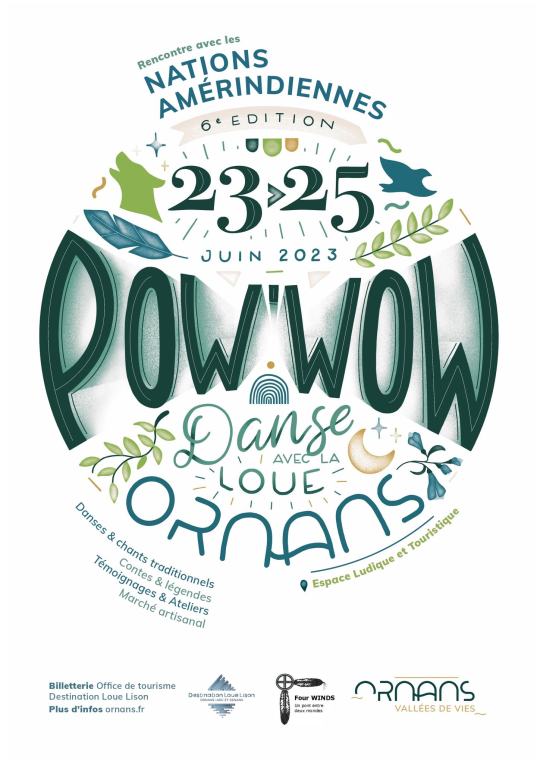
Pow Wow - Danse avec la Loue #6 - à Ornans, Doubs
C'est dans 2 mois !!
Rencontre avec les nations amérindiennes
Danses et chants traditionnels
Contes et légendes
Témoignages et ateliers pratiques
Marché artisanal
Cette édition 2023 vous permettra de rencontrer les nations Choctaw, Paiute, Lakota oglala, Innu, Ojibwe, Arapahoe, Huron-Wendat, Anichinabé, Attikamek.
La ville d’Ornans, en partenariat avec l’association Four Winds qui soutient les peuples amérindiens depuis plus de vingt ans accueille le POW WOW Danse avec la Loue. S’ils sont très répandus aux États-Unis, le rassemblement d’amérindiens « POW WOW Danse avec la Loue » est l’unique événement du genre en Europe à respecter fidèlement les traditions et coutumes amérindiennes.
#pow wow#danse avec la loue#ornans#nations#amerindiens#four winds#nations amerindiennes#peuples premiers#coutumes#first nations#choctaw#paiute#lakota#innu#arapahoe#huron-wendat#contes#ateliers#marche traditionnel#conferences#ceremonie#rencontre#traditions#stolen land#doubs#franche-comte
46 notes
·
View notes
Text

A Mono Lake basket-maker," taken in 1924 ...
Edward S. Curtis/Library of Congress
This basket-maker from the Mono Lake Paiute tribe was photographed in 1924 ...
17 notes
·
View notes
Text
Here’s a link to donate
And here’s a link with some other things you can do to help (particularly for those in the US!)
#thacker pass#landback#indigenous resistance#indigenous rights#lithium mining#reno-sparks indian colony#paiute#nevada#oregon#usa#us politics#turtle island#direct action#news#ecology#peehee mu’huh
35 notes
·
View notes
Text
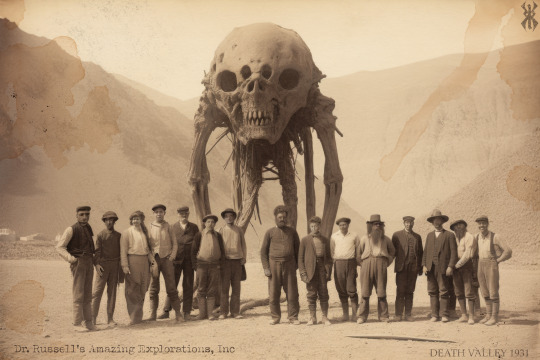
Rare photo of Dr. F Bruce Russell and Dr. Daniel S. Bovee's team and the mummified giant from "ritual hall' discovered in a series of complex tunnels deep below Death Valley, 1931
#1931#deathvalley#deathvalleynationalpark#mummy#giant#1930s#Amazingexplorations#desert#cryptid#cryptidhunter#Paiute#legend#mythology#archeology#catacomb#antiquephotography
4 notes
·
View notes
Text

Street art in Co Springs
#native american#native#tribe#first nations#indigenous#indigineous people#native american history#native tribe#reservation#tribal#nevada native#rez#native america#reservation dogs#colorado native#decolonize#northern paiute#paiute
80 notes
·
View notes
Text
WEST INDIGENOUS NORTH AMERICAN RESOURCES
The Anthropological Masterlist is HERE.
The Western United States is a North American region that constitutes the western part of the United States. Alaska and Hawaii are also considered part of the Western United States.
AHTNA ─ “The Ahtna, or Ahtena, people are an Indigenous North American people. They are native to the Copper River in southern Alaska.”
─ Ahtna Information
ALEUT ─ “The Aleuts, or Unangas, are an Inuit people. They are native to the Aleutian Islands between Russia and Alaska.”
─ Aleut Information
─ Aleut Museum
─ Aleut Language
ATHABASKAN ─ “Athabaskan, or Dene, is an Indigenous American linguistic group that share the Athabaskan language family. They are native to Alaska, north Canada, and southwest United States of America.”
─ Athabaskan Languages
─ Athabaskan Language Conference
CAHUILLA ─ “The Cahuilla, or Ivilyuqaletem, people are an Indigenous North American people. They are native to the center of southern California.”
─ Cahuilla Information
─ Cahuilla Language
─ Cahuilla Language
CROW ─ “The Crow, or Absaroka, people are an Indigenous North American people. They are native to central and south Montana.”
─ Crow Information
─ Crow Language
HOPI ─ “The Hopi are an Indigenous North American people. They are native to northeastern Arizona.”
─ Hopi Information
─ Hopi Culture and History
─ Hopi Dictionary
INUIT ─ “The Inuit are an Indigenous North American people. They are native to Greenland, Canada, and Alaska.”
─ Inuit Collections
─ Inuit Religion
─ Inuit Dictionary
KUMEYAAY ─ “The Kumeyaay, or Tipai-Ipai, people are an Indigenous North American people. They are native to southern California.”
─ Kumeyaay Culture
─ Kumeyaay Language
─ Diegueño Dialect
KWAKWAKA’WAKW ─ “The Kwakwaka’wakw, or the Kwakiutl, people are an Indigenous North American people. They are native to Vancouver Island.”
─ Kwakwaka’wakw Mythology
─ Revival of the Kwakwaka’wakw Langauge
─ The Bible in Kwakwaka’wakw
LUISEÑO ─ “The Luiseño, or Payómkawichum, people are an Indigenous North American people. They are native to the coastal area of southern California.”
─ Luiseño Culture
─ Luiseño History
─ Luiseño Language
MIWOK ─ “The Miwok, or Miwuk, people are an Indigenous North American people. They are native to northern California.”
─ Miwok Mythology
─ Miwok History
─ Miwok Dictionary
NAVAJO ─ “The Navajo, or Diné, people are an Indigenous North American people. They are native to the southwestern United States of America.”
─ Navajo Culture
─ Navajo Mythology
─ Navajo Language
O’ODHAM ─ “The O’odham people are an Indigenous North American people. They are native to the Sonoran Desert in Arizona.”
─ O’odham Dictionary
PAIUTE ─ “The Northern Paiute people are an Indigenous North American people. They are native to the Great Basin in the United States of America.”
─ Paiute Culture
─ Paiute Culture
─ Paiute History
PUEBLO ─ “The Pueblo, or Puebloan, people are an Indigenous North American people. They are native to New Mexico and Arizona.”
─ Isleta Pueblo Information
SHOSHONE ─ “The Shoshone, or Shoshoni, people are an Indigenous North American people. They are native to Wyoming, Idaho, and Nevada.”
─ Shoshone Information
─ Shoshoni Language Project
SNOHOMISH ─ “The Snohomish people are an Indigenous North American people. They are native to the Puget Sound area of Washington.”
─ Snohomish Culture and History
TEWA ─ “The Tewa are an Indigenous North American people. They are native to the Rio Grande, New Mexico.”
─ The Ethnogeography of the Tewa Indian
WINTUN ─ “The Wintun people are an Indigenous North American people. They are native to North California.”
─ Wintu Language
ZUNI ─ “The Zuni, or Zuñi, people are an Indigenous North American people. They are native to western New Mexico.”
─ Zuni Culture
─ Zuni Culture
─ Zuni Language
#resources#western united states#ahtna#aleut#athabaskan#cahuilla#crow#hopi#inuit#kumeyaay#kwakwaka'wakw#luiseño#miwok#navajo#o'odham#paiute#pueblo#shoshone#snohomish#tewa#wintun#zuni
56 notes
·
View notes
Text
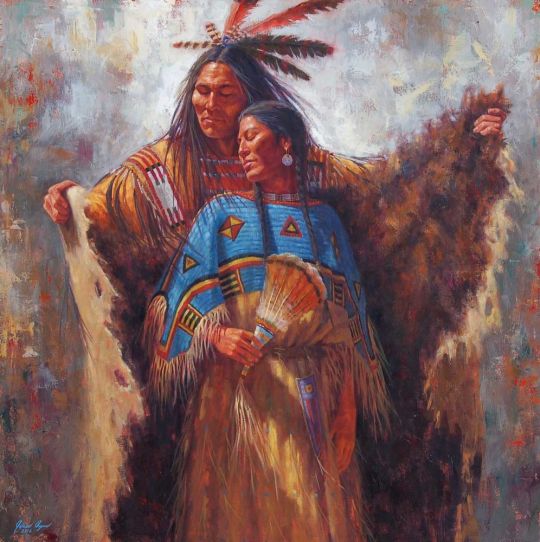
«I love you» in different Native American languages
Qunukamken = I love you (Alutiiq Language, Alaska)
Chiholloli = I love you (Chickasaw, Oklahoma)
Ayóó’áníínísh’ní = I love you (Diné, Navajo, Arizona/New Mexico)
Moo ‘ams ni stinta = I love you (Klamath-Modoc, Oregon)
Ktaʔwãanin = I love you (Mahican Dialect, Stockbridge-Munsee Tribe of Wisconsin)
Konnorónhkwa = I love you (Mohawk, New York)
In ‘ee hetewise = I love you (Nimiipuutimpt, Nez Perce Tribe, Idaho)
Nu Soopeda U = I love you (Northern Paiute, Nevada)
Gizaagiin = I love you (Ojibwa/Bad River Ojibwe, Wisconsin)
Kunoluhkwa = I love you (Oneida Tribe, Wisconsin)
Thro sii muu = You are dear to me (Pueblo of Acoma, Acoma Keres dictionary, New Mexico)
Eee-peinoom = I love you (Pueblo of Isleta, New Mexico)
Amuu-thro-maa = I love you (Pueblo of Laguna, Laguna Keres dictionary, New Mexico)
Shro- tse-mah = I love you (Pueblo of San Felipe, San Felipe Keres dictionary, New Mexico)
‘Ho’doh’ee’cheht’mah = I love you (Pueblo of Zuni, New Mexico)
Kʷ in̓x̣menč = I love you (Salish, Washington)
Gönóöhgwa’ = I love you (Seneca Tribe, New York)
Ixsixán = I love you (Tlingit, Alaska)
I daat axajóon — I’m dreaming of you (Tlingit, Alaska)
Ma ihkmahka — I love you (to a male) (Tunica, Tunica-Biloxi Tribe of Louisiana)
Hɛma ihkmahka — I love you (to a female) (Tunica, Tunica-Biloxi Tribe of Louisiana)
#Native American#NativeAmerican#Alutiiq#Chickasaw#Diné#Navajo#Klamath-Modoc#Mahican#Mohawk#Nimiipuutimpt#Paiute#Ojibwa#Ojibwe#Oneida#Acoma#PuebloofIsleta#PuebloofLaguna#PuebloofSanFelipe#PuebloofZuni#Salish#Seneca#Tlingit#Tunica#Love#Amor#foryou#parati#fyp#foryoupage
6 notes
·
View notes
Photo
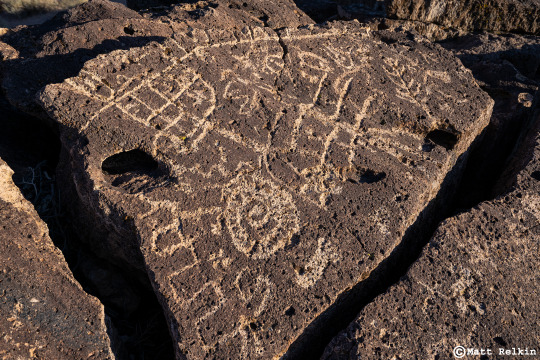
YJ Site 3, CA. Representational and Abstract, though abstract only applies because we don’t truly know what these are meant to represent. It’s a strange thing to assign terms that can imply whether these images “mean something” or not, when we haven't spoken to the person who made them. I see a footprint and a plant stalk and a millipede. You may see something completely different. I have no doubt that most of these were representational to the artist who created them. They may look like nothing to some, and something to others. Attributed to the Paiute-Shoshone, and possibly some older nomadic cultures as well.
30 notes
·
View notes
Text
Haakapainizi

“Grasshopper” © Sergei Ashihmin, accessed at his ArtStation here
[The haakapainizi is a bogey from the legends of the Kawaiisu people of southeastern California. I know of it through @a-book-of-creatures. A grasshopper is a weird choice for an ogre from a Western standpoint, but they are pretty freaky looking, especially big lubber grasshoppers. It is said by the Kawaiisu that it can cover twenty miles in a single step, which gave me an excuse to come up with mechanics for the classic fairy tale concept of seven league boots (seven leagues = twenty one miles)]
Haakapainizi
CR 14 NE Magical Beast
This vile creature looks like a grasshopper the size of a rhinoceros, with spiny hind legs and small covering its abdomen. Its head is disturbingly similar to a human face, with a lower jaw split into savage mandibles. It carries a basket on its back.
The haakapainizi is a bogeyman of the deserts, a cruel shapechanger that feeds preferentially on the weakest members of society; children, the sick and the elderly. It can take the guise of either a mundane humanoid or a giant, and prey on the children of stone and desert giants as readily as those of humans or gnolls. Their preference for the weak is partially out of spite and partially out of sloth. A haakapainizi is a powerful combatant, but they would rather take easy victims than exert themselves, and they delight in the tragedy that their depredations cause.
Haakapainizi prefer subtlety and trickery, luring victims into striking distance with sweet words or proffered gifts. That these gifts are their own vile secretions is the first cruelty they heap on their victim, before grabbing them, stuffing them into their magical baskets and leaping away. A creature in the basket is usually overwhelmed by a powerful enchantment and can only be rescued from without. If cornered or prevented from escaping, they will engage in a full on brawl with their claws, mandibles and a powerful kick. If opponents can regularly do damage to them in melee, they transform into a swarm of locusts, both to avoid weapon damage and to make themselves more maneuverable and easily hidden. Haakapainizi rarely fight to the death, but their gluttonous natures sometimes do get the better of them.
A haakapainizi lairs in a cave or hut distant from its hunting ground. They can leap so quickly that it is effectively teleportation, traveling miles with a single bound. This is not very precise travel, so they do not use it to hunt or ambush prey (although they won’t hesitate to attack if they accidentally come upon a potential victim). They have no friends and no allies; haakapainizi are peevish and temperamental and reject any sort of companionship except as a ruse in order to attract a victim. How they reproduce given their universal misanthropy is unclear—perhaps they are transformed from mundane grasshoppers that scavenge on humanoid flesh. Despite their many strengths, haakapainizi are somewhat weak willed, and can easily succumb to mind-influencing magic. The cult of Deskari sometimes uses them as charmed minions, but the shapeshifters bear no love or loyalty to the Lord of the Locust Host.
Haakapainizi CR 14
XP 38,400
NE Large magical beast (shapechanger)
Init +5; Senses darkvision 60 ft., low-light vision, Perception +10, scent
Defense
AC 29, touch 14, flat-footed 25 (-1 size, +5 Dex, +14 natural)
hp 200 (16d10+112)
Fort +17, Ref +15, Will +8
DR 10/magic; SR 25
Offense
Speed 40 ft., fly 40 ft. (poor)
Melee 2 claws +23 (1d6+8/19-20 plus grab), bite +23 (1d8+8), kick +21 (1d12+12 plus push)
Space 10 ft.; Reach 5 ft. (10 ft. with kick)
Special Attacks basket, fool’s gift, powerful blows (kick), push (10 ft.)
Statistics
Str 26, Dex 21, Con 24, Int 15, Wis 12, Cha 19
Base Atk +16; CMB +25 (+29 grapple); CMD 40 (48 vs. trip)
Feats Blinding Critical, Combat Reflexes, Critical Focus, Deceitful, Improved Critical (claw), Iron Will, Multiattack, Power Attack
Skills Acrobatics +18 (+34 when jumping), Bluff +18, Climb +17, Craft (weaving) +10, Disguise +18, Fly +1, Intimidate +10, Perception +10, Stealth +11; Racial Modifiers +12 to Acrobatics when jumping
Languages Common, Giant, Sylvan
SQ change shape (humanoid or giant, alter self or giant shape I), seven league leap, swarm form
Ecology
Environment warm desert and hills
Organization solitary
Treasure standard
Special Abilities
Basket (Su) If a haakapainizi begins its turn with a creature grappled in its claws, as long as the creature is size Medium or smaller, it can stuff the target into its basket as a swift action that does not provoke attacks of opportunity. A creature in the basket must succeed a DC 22 Will save or be dazed as long as it remains in the basket, and for 1 round thereafter. A creature that succeeds this save is immune to the dazing effect of the basket for the next 24 hours. This is a mind-influencing ability and the save DC is Charisma based. A creature in the basket can try to cut its way free with any light slashing or piercing weapon. The basket has AC 17 and 20 hit points. If a creature cuts its way out of the basket or the basket is damaged enough to allow a victim to escape, the haakapainizi cannot put prey in its basket again until it has spent 1 hour mending it.
The basket has other special qualities while in the haakapainizi’s possession. The weight of creatures in the sack do not count against the haakapainizi’s carrying capacity, and the haakapainizi can fit up to two Small creatures or one Medium creature in the basket at a time. If used by any creature other than the haakapainizi that owns it, this container functions as a mundane basket. If a haakapainizi’s basket is lost or destroyed, it can craft a new one with proper materials and a week of work.
Fool’s Gift (Su) As a standard action, a haakapainizi can produce a lump of mucus and cloud the mind of a creature within 30 feet, making them think that it is delicious food that they are compelled to consume. Unless the creature succeeds a DC 22 Will save, it spends its next actions moving towards the haakapainizi, taking the mucus (a standard action) and eating it (another standard action). Once a creature eats the mucus, it must succeed a DC 25 Fortitude save or be nauseated for 1 minute. The save DC for the compulsion effect is Charisma based, and the save DC for the nausea effect is Constitution based.
Seven League Leap (Su) As a full round action that provokes attacks of opportunity, a haakapainizi can leap up to 21 miles, arriving at its destination instantly. This travel is imprecise—it arrives 1d10x100 feet away from its intended destination in a random direction. A haakapainizi can use this ability a number of times per day equal to its Strength modifier.
Swarm Form (Su) As a standard action, a haakapainizi can transform itself into a swarm of Diminutive locusts. In this form, it cannot use natural attacks, its basket, fool’s gift or seven league leap abilities, but its flying maneuverability increases to good, it gains a swarm attack and gains the distraction special attack. It can resume its normal form as a standard action. A haakapainizi’s statistics in swarm form differ from its normal statistics as follows: AC 28, touch 28, flat-footed 18 (+8 size, +10 Dex); Ref +20; Defensive Abilities immune to weapon damage, swarm traits; Attack swarm (4d6 plus distraction); Special Attacks distraction (DC 25); CMB -; CMD -; Skills Acrobatics +23, Fly +17, Stealth +36
69 notes
·
View notes
Text
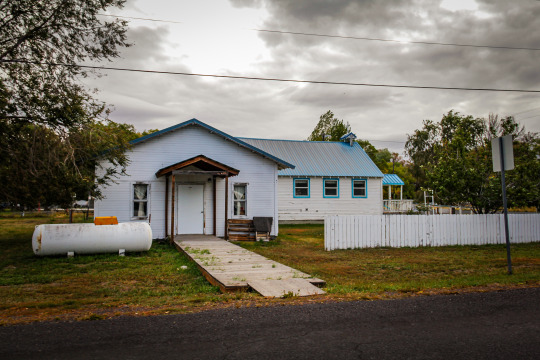

Church of the Living Waters is an ELCA congregation on the Paiute Reservation in Burns, Oregon, led by Pastor Matt Littau
Photo from October 2023
An early photo of this structure can be found in the previous post link below.
#oregon#eastern oregon#harneycounty#the great pnw#the old west#oregonoutback#pnw#oregon outback#burns oregon#harney county#Paiute#indigineous people#the high desert#the pacific northwest
6 notes
·
View notes
Video
youtube
Sarah Winnemucca Hopkins Life Among the Piutes: Their Wrongs and Claims ...
Image is from Angel, Myron, ed. History of Nevada; with illustrations and biographical sketches of its prominent men and pioneers. Oakland: Thompson and West, 1881.
Image is from https://commons.wikimedia.org/wiki/File:Sarah_Winnemucca_Hopkins.jpg
Image is from https://commons.wikimedia.org/wiki/File:Sarah_Winnemucca_statue.jpg
If you would like to read the full book, you can find many versions in your library or online. This book is in the public domain. You can find it on many sites. Ex. Wikisource, and Google Play Books. Try your local library or digital libraries.
Disclaimer: The book is available in the public domain and may contain some historical inaccuracy. I summarize the book to the best of my ability or highlight excerpts of interesting facts. If you would like to add information, advise a current article/book, and/or critically analyze the book, it is welcome. Thank you.
#youtube#SarahWinnemuccaHopkins#LifeAmongThePiutes#piute#paiute#IndigenousPeopleOfAmerica#IndigenousPeopleHistory#history#book#OldBook#books#PublicDomain#HistoryInEverything
2 notes
·
View notes
Text
“Even as terrible as the secretive machinations of the Los Angeles Department of Water and Power might have been as its leaders went about forcefully acquiring land and water rights, it turns out that even the dramatized accounts are missing some of the worst of the evil doing, a result of the habitual partiality with which we tell history on this continent. By which I mean that the standard accounts of the theft of water from the Owens River Valley are typically told with a focus on the White landowners in the area, who at the time were close descendants of or even possibly homesteaders themselves, and thereby the agents of displacement for the Paiute and Shoshone, who had been managing the use of the Owens River long before the LADWP ever showed up on the scene. Just take a quick skim of that Wikipedia article that I linked on the ‘water wars,’ and you’ll see what I mean; the Paiute get a mention but then just sort of quietly disappear from the story.”
New piece up at Unsettling looking at the erasure in common tellings of the story of the California water wars, and new Land Back efforts in the Owens River Valley and Eastern Sierra, also known as Payahuunadü.

#Payahuunadü#water#owens river#owens lake#land back#ladwp#cadillac desert#eastern sierra#los angeles#paiute#shoshone
5 notes
·
View notes
Text
Crosspost from the main site
Something I came across today while searching for resources to add to the Nevada page, a bunch of articles about the history Native tribes around the Colorado River Basin, and their fight for water rights, such as the Paiute people and how Owen’s Lake was drained to give water to L.A. Consequently the whole valley suffered, wildlife and vegetation disappeared, and the dust and particulate matter caused respiratory complications in Paiute Tribal members.
There’s also a link to the Native Nevada Podcast which goes over tons of history and stuff affecting indigenous people in Nevada.
I’m going to post some of the articles I’ve come across, in no particular order, but it’s well worth the read. This by no means even begins to cover this topic, but it’s a good starting point, so I’m saving it to read it more thoroughly myself later, and I urge you to do the same.
Honoring A Water Warrior: How Harry Williams Fought for Paiute Water Rights in Owens Valley by Jeanine Pfeiffer
Native Nevada Podcast
Nevada Washoe History compiled and edited by Kathy Weiser/Legends of America {helps understand some of the historical context}
Los Angeles Aquaduct history {aka. Mulholland was the worst. There’s a documentary I watched on it that shows how much death and destruction was caused, if I can find the name I’ll link it here.}
L.A. took their water and land a century ago. Now the Owens Valley is fighting back by Louis Sahagún
Lawyer: Settlement would Affirm Diné Rights by Marley Shebala
6 notes
·
View notes
Text



Thank you @ShaunSmallest on Twitter for doing an incredible job at bringing this concept to life!
The line is a regional mountainous variant of Mareep, Flaafy, and Ampharos, cousins from across the sea!
Inspire by the Paiute tale ‘Na-gah becomes the North Star’ and the Cahuilla tale ‘Young Boys Climb the Mountain’
Still need to decide on their native and English names.
#mareep#flaafy#ampharos#regional variant#pokemon#fakemon#fake pokemom#west coast#American Indian Legends#paiute#cahuilla#ShaunSmallest
2 notes
·
View notes